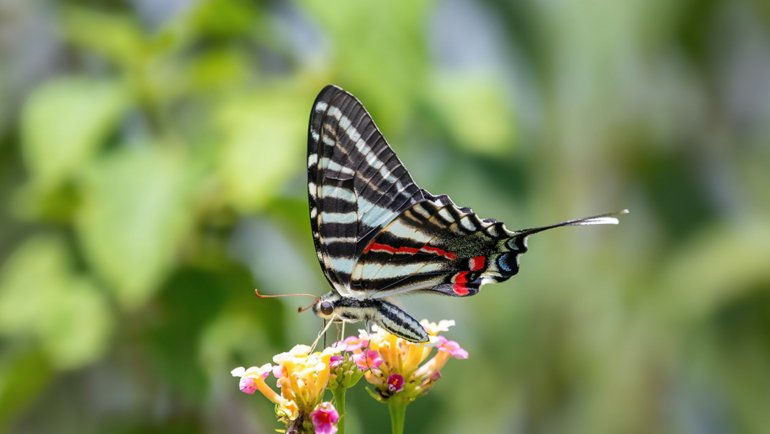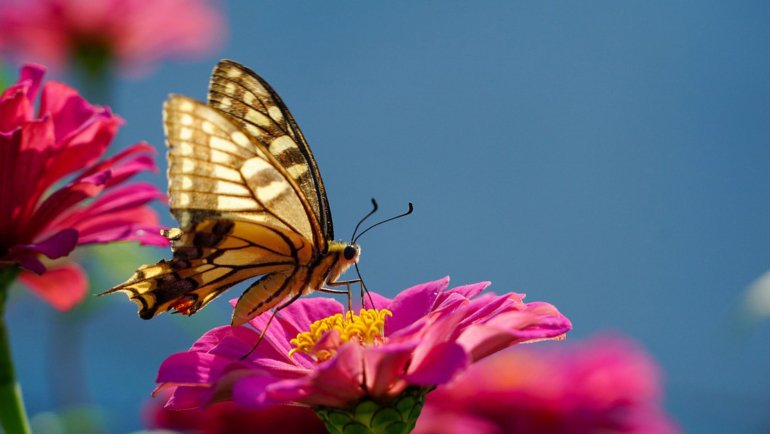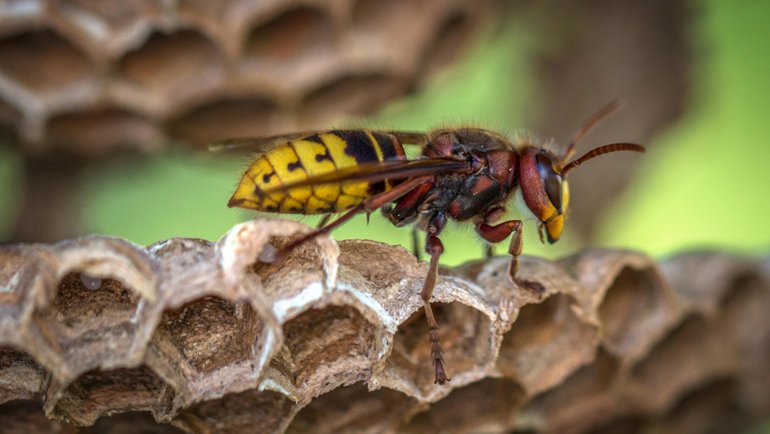Fireflies, also known as lightning bugs, captivate us with their enchanting light displays on warm summer nights. These luminescent beetles are not only a marvel of nature but also play an important role in various ecosystems around the globe.
This article serves as a detailed fact sheet about fireflies, offering insights into their classification, physical characteristics, habitat, behavior, and much more.
From the magic of their glowing bodies to the intricacies of their life cycle, we will explore the fascinating world of fireflies, shedding light on the significance of these tiny creatures and the challenges they face in the modern world.
The Firefly at a Glance
Classification
| Kingdom: | Animalia |
| Phylum: | Arthropoda |
| Class: | Insecta (Insects) |
| Order: | Coleoptera |
| Family: | Lampyridae |
| Genus: | Varied (e.g., Photinus, Luciola) |
| Species: | Over 2,000 identified species |
Essential Information
| Average Size: | 0.2 – 1 inch (5 – 25 mm) |
| Average Weight: | Not typically measured |
| Average Lifespan: | 2 months to 2 years (varies by species and environment) |
| Geographical Range: | Worldwide, predominantly in temperate and tropical regions |
| Conservation Status: | Varies by species; some are under threat due to habitat loss and light pollution |
Species and Subspecies
The family Lampyridae encompasses over 2,000 species of fireflies, each with unique characteristics and behaviors. These species are distributed across various genera, with Photinus and Luciola being among the most well-known. The diversity among firefly species is vast, with significant variations in size, coloration, and light emission patterns.
- Photinus pyralis, commonly known as the common eastern firefly, is famed for its synchronized flashing patterns observed in parts of the Eastern United States.
- Luciola cruciata, known in Japan as “Genji firefly,” is celebrated for its beautiful, continuous glow and is a subject of numerous cultural festivals.
- The differences among species also extend to their habitats, mating rituals, and times of activity. For example, some species are diurnal and do not produce light, relying instead on chemical pheromones for attraction.
- Subspecies variations often involve differences in light color and flashing patterns, which are critical for communication and mating. The color of the light can range from yellow, green, to orange, with each species having a distinct pattern that helps members of the opposite sex recognize each other.
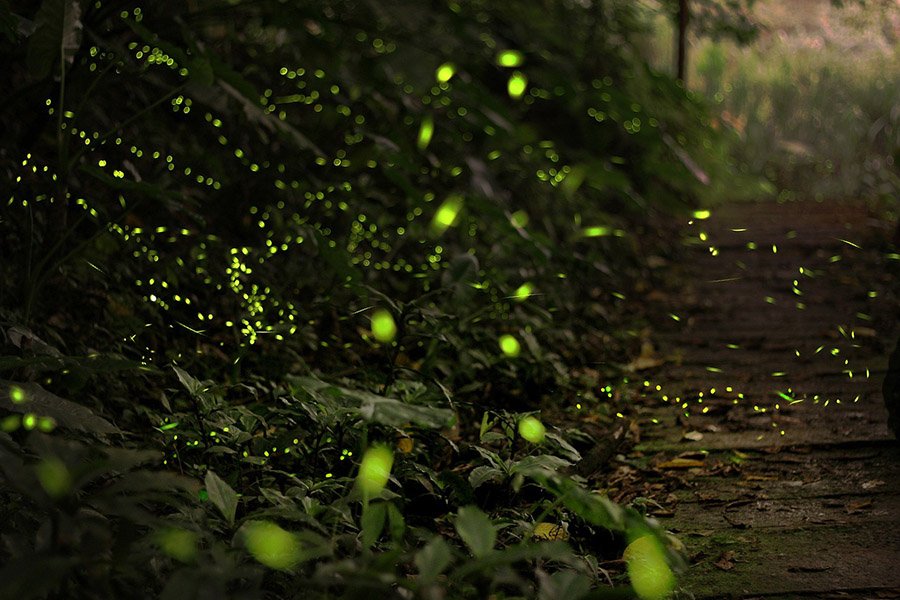
Description
Fireflies are known for their unique ability to produce light, a phenomenon known as bioluminescence. This characteristic light is generated in the lower abdomen through a chemical reaction involving the compound luciferin, oxygen, and the enzyme luciferase.
The purpose of this light ranges from attracting mates to deterring predators. The color of the bioluminescent light can vary from yellow, green, to orange, depending on the species.
Physically, fireflies range in size from about 0.2 to 1 inch (5 to 25 mm). They have soft bodies, with colors that typically range from yellow to dark brown, and sometimes with distinctive markings that can be used to identify species. They possess compound eyes, long antennae, and often have underdeveloped mouthparts as adults, since many do not feed.
Sexual dimorphism is present in many firefly species, with females often being larger than males, especially in the abdomen where the light-producing organs are located. In some species, females are flightless and remain on the ground or in vegetation, using their light to attract flying males.
Moreover, the light patterns used for communication during mating rituals vary significantly between sexes and among different species.
Habitat and Distribution
Fireflies are found worldwide, with a notable presence in temperate and tropical regions. Their distribution spans across all continents except Antarctica, reflecting their adaptability to various environmental conditions.
These beetles thrive in a range of habitats, including meadows, forests, marshes, and gardens. They are particularly abundant near bodies of water, such as streams and ponds, where humidity levels are higher.
The habitat of a firefly greatly influences its behavior and life cycle. For instance, some species are adapted to forested environments where they can be seen lighting up tree canopies, while others prefer grassy areas and are observed glowing closer to the ground.
The preservation of natural habitats is crucial for maintaining firefly populations, as these environments provide the necessary conditions for their survival and reproduction.
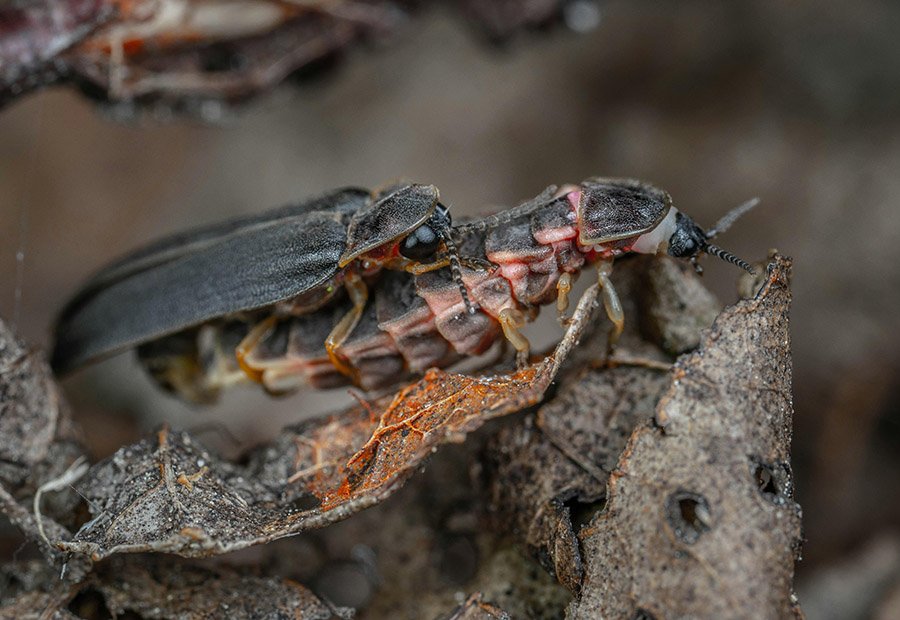
Behavior
Fireflies exhibit fascinating behaviors, most notably their bioluminescent communication. This behavior is primarily used for mating purposes, with males flying and emitting specific light patterns to attract females, who respond with their own flashes. The timing, duration, and frequency of these light signals are unique to each species, enabling individuals to find suitable mates.
- General Behavior: Fireflies are mostly nocturnal, becoming active at dusk when their light can be most effectively used for communication. However, there are diurnal species that rely on chemical signals rather than light for mating.
- Social Structure: Fireflies are generally solitary insects but come together in large numbers during mating seasons. Some species display synchronized flashing, creating a stunning visual display that is believed to increase the efficiency of attracting mates.
- Communication: Beyond mating signals, firefly light may also serve as a warning to predators about their unpalatable taste, thanks to defensive compounds in their bodies. The larvae, which are also bioluminescent, use their glow as a deterrent against predators.
Firefly behavior is not only a subject of scientific interest but also a source of inspiration and fascination for many cultures around the world.
The study of these behaviors, particularly their complex communication systems, provides valuable insights into the evolutionary biology and ecology of bioluminescent organisms.
Diet and Feeding Behavior
Fireflies have diverse diets throughout their life stages. As larvae, they are primarily carnivorous, preying on soft-bodied invertebrates like snails, slugs, and worms. The larvae inject their prey with a paralyzing toxin before consuming it, a process that can take several days. This carnivorous behavior is essential for accumulating energy reserves for metamorphosis and adulthood.
In contrast, adult fireflies have different feeding habits depending on the species. Some do not feed at all during their short adult lives, relying entirely on the energy reserves accumulated during their larval stage. Others may consume pollen, nectar, or aphid honeydew, playing a role in the pollination of certain plant species.
There are also reports of some adult fireflies preying on other insect species, including smaller fireflies, indicating a level of cannibalism and predatory behavior within the firefly community.
Predators
Despite their enchanting light displays, fireflies face threats from various predators throughout their life cycle. Common predators include birds, spiders, frogs, and lizards, which prey on fireflies at different stages of their development.
The bioluminescence of fireflies serves as a defense mechanism, signaling their unpalatability due to the toxic chemicals they contain, which can deter some potential predators. However, not all predators are deterred by these signals, and some have developed a tolerance to the toxins.
Interestingly, there are instances of mimicry within the firefly community, where females of certain species mimic the flashing patterns of other species to attract and then prey on the males. This predatory behavior highlights the complex interactions within ecosystems and the ongoing evolutionary arms race between species.
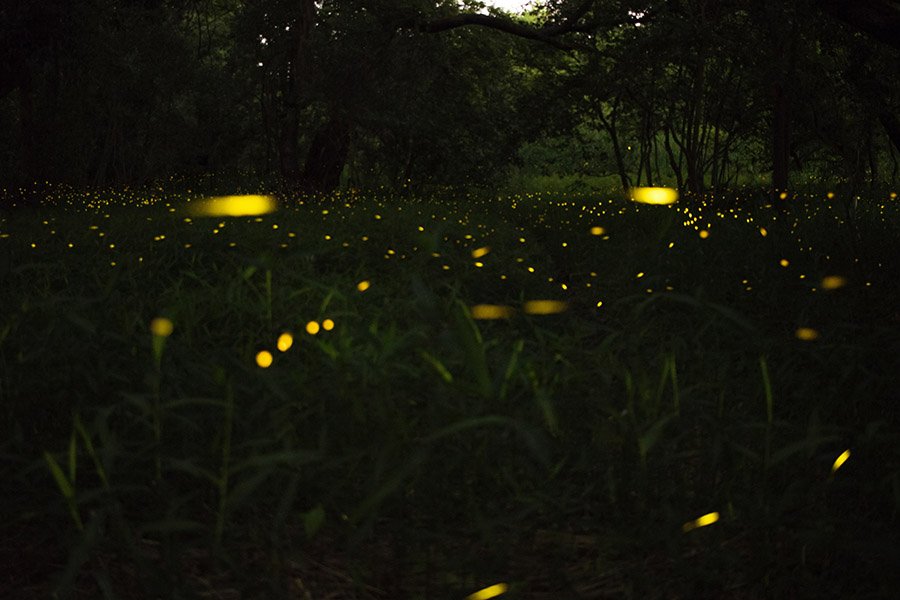
Reproduction and Life Cycle
The life cycle of fireflies is fascinating, encompassing four distinct stages: egg, larva, pupa, and adult. The process begins when a female lays her eggs in or on the ground, often in moist areas conducive to the development of the larvae.
After hatching, the larvae undergo several molts, feeding and growing until they are ready to pupate. This larval stage can last for one to two years, depending on the species and environmental conditions.
Pupation occurs in the soil, where the larva transforms into a pupa, a stage that can last from a few weeks to several months. During this time, the firefly undergoes metamorphosis, emerging as an adult ready to reproduce. Adult fireflies live for several weeks to a few months, during which their primary focus is on mating and laying eggs for the next generation.
Reproduction is centered around the unique bioluminescent communication between males and females. Males fly and emit species-specific light patterns to attract females, who respond from the ground or vegetation. After mating, females lay their eggs, and the cycle begins anew.
The intricate mating rituals and bioluminescence of fireflies not only facilitate reproduction but also contribute to the enchanting displays that captivate human observers worldwide.
Conservation and Threats
The conservation status of fireflies varies globally, with some species thriving while others face threats from habitat loss, pollution, and light pollution. Light pollution, in particular, disrupts firefly mating rituals by interfering with their ability to communicate through bioluminescent signals. Urban expansion and the destruction of natural habitats further exacerbate these challenges, reducing the areas where fireflies can live and breed.
Conservation efforts for fireflies include:
- Research and monitoring to better understand species distribution and population trends.
- Habitat preservation and restoration projects that maintain the natural environments fireflies depend on.
- Public education campaigns to raise awareness about the impact of light pollution and promote dark-sky initiatives.
- Community science projects, such as firefly counts, that engage the public in conservation efforts and data collection.
These efforts are critical for ensuring the survival of firefly species, many of which play important roles in their ecosystems as predators of pest species and as part of the food web.
Fun Facts
- Firefly Lights: The light produced by fireflies is incredibly efficient, with nearly 100% of the energy emitted as light rather than heat, making it one of the most efficient forms of bioluminescence in nature.
- Chemical Communication: Aside from their famous light displays, fireflies also communicate through chemical signals, especially in diurnal species that don’t produce light.
- Synchronized Flashing: Some firefly species perform synchronized flashing, creating spectacular light shows. Scientists believe this behavior may help females locate males more easily among the multitude of signals.
- Longevity: Firefly larvae can live for up to two years, feeding and growing underground, which is considerably longer than their adult life span of a few weeks to a few months.
- Cultural Significance: Fireflies have inspired countless poems, songs, and festivals around the world, symbolizing the beauty of nature and the fleeting moments of life.
Frequently Asked Questions
Can fireflies be found in all countries?
Fireflies are found worldwide, but their presence and species diversity vary significantly by region. They are most abundant in temperate and tropical climates.
Why do fireflies glow?
Fireflies glow for several reasons, including mating communication, deterring predators by signaling their toxicity, and, in larval stages, warning potential predators of their unpalatability.
Are fireflies endangered?
The conservation status of fireflies varies by species. While some are abundant, others face threats from habitat loss, pollution, and light pollution, leading to declines in certain areas.
How can I help fireflies?
You can help fireflies by reducing light pollution around your home, preserving natural habitats, avoiding the use of pesticides in your garden, and participating in community science projects to monitor firefly populations.
Do all fireflies produce light?
Most firefly species produce light, but there are some diurnal species that do not. These species rely on chemical signals rather than bioluminescent ones for communication.
